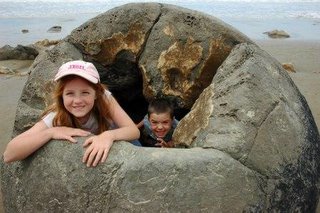The Last Post
It was a very long and boring journey back and unbelievably cold at Heathrow!! It had been raining for 3 days before we left so we should have felt right at home in the drizzle here but NZ rain was a hell of a lot warmer. It was sad to say goodbye to the friends we made in New Zealand but lovely to be seen off at the airport.
Chris was back to work almost before drawing breath and has been so happy to be back and to be busy. The children had a week of half term before returning to school (by my reckoning that brought their total attendance at school since July 2005 to about 9 weeks!!). They settled back in like they had never been away! I have found it harder to re-acclimatise than the others and still yearn a little for the NZ dream. I have decided to set up my own photography business, something I have wanted to do for a while, and my website is here: http://www.images-by-vanessa.co.uk/ - see what you think.
We have been back in the UK now for 6 weeks and yesterday, the majority of our household goods arrived. It feels very odd (again) to see the stuff that was packed up such a long time ago. All we need to do now is sell the house and car out there and buy a house here - it sounds so easy!
On to the next chapter, whatever that may bring.


 As usual, Alex thoroughlyy enjoyed the boat ride and was very happy that from his position on the top deck, he could see the driver!
As usual, Alex thoroughlyy enjoyed the boat ride and was very happy that from his position on the top deck, he could see the driver!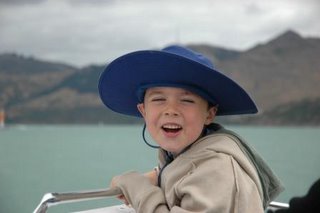
 The scenery is fabulous as the naturall harbour in which the island sits is surrounded by the port hills.
The scenery is fabulous as the naturall harbour in which the island sits is surrounded by the port hills.




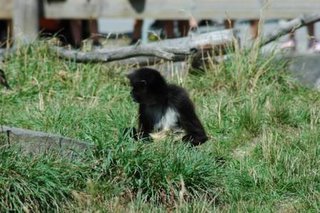 They had loads of lions and Tigers which Alex and his friend Max really liked. They are in the process of building a massive new lion enclosure and a matching one for the tigers.
They had loads of lions and Tigers which Alex and his friend Max really liked. They are in the process of building a massive new lion enclosure and a matching one for the tigers. This bird is a Tui - a native New Zealand bird. The zoo are trying to increase the numbers as is endangers, as are many NZ native birds.
This bird is a Tui - a native New Zealand bird. The zoo are trying to increase the numbers as is endangers, as are many NZ native birds.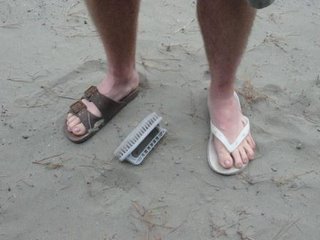 a fantastic pair of classy jandels and a brush suitable for scrubbing the most esteemed of floors. Did we find the glasses?
a fantastic pair of classy jandels and a brush suitable for scrubbing the most esteemed of floors. Did we find the glasses?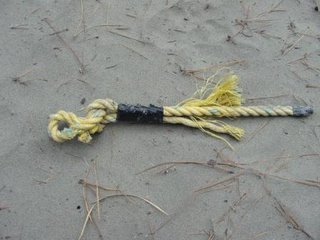



 It is a 40 minute walk from the car park to the terminal face of the Franz Josef glacier. The track follows a rocky path over riverbed.
It is a 40 minute walk from the car park to the terminal face of the Franz Josef glacier. The track follows a rocky path over riverbed. 
 I overhead the guide of an adjacent group describe the geology as schist. I thought it was alright. Sentinel Rock (not pictured but a bigger version of below) emerged from beneath the glacier in 1865 and is an example of how the great bed of ice ground the hard schist bedrock into distinctive rounded rocks. Since 1909 the glacier has retreated over 3km and plants have progressively colonised where a veneer of rubble has been dumped over bedrock.
I overhead the guide of an adjacent group describe the geology as schist. I thought it was alright. Sentinel Rock (not pictured but a bigger version of below) emerged from beneath the glacier in 1865 and is an example of how the great bed of ice ground the hard schist bedrock into distinctive rounded rocks. Since 1909 the glacier has retreated over 3km and plants have progressively colonised where a veneer of rubble has been dumped over bedrock. 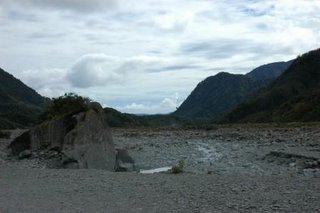







 At the top there is a hotel/visitors centre place. Great view.
At the top there is a hotel/visitors centre place. Great view.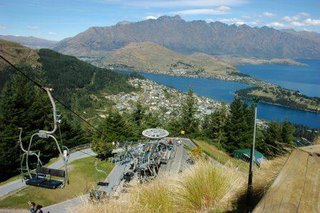


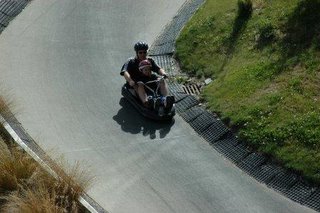
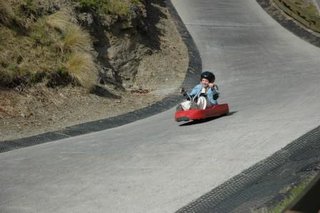


 Yes - it really is a dolphin!!!!!!!!!!!
Yes - it really is a dolphin!!!!!!!!!!!
 Mitre Peak, shown in this picture, is so named because of it's similarity to the bishops headgear of the same name. Is is, supposedly, the most photographed mountain in New Zealand. I can see why!!!!
Mitre Peak, shown in this picture, is so named because of it's similarity to the bishops headgear of the same name. Is is, supposedly, the most photographed mountain in New Zealand. I can see why!!!!











